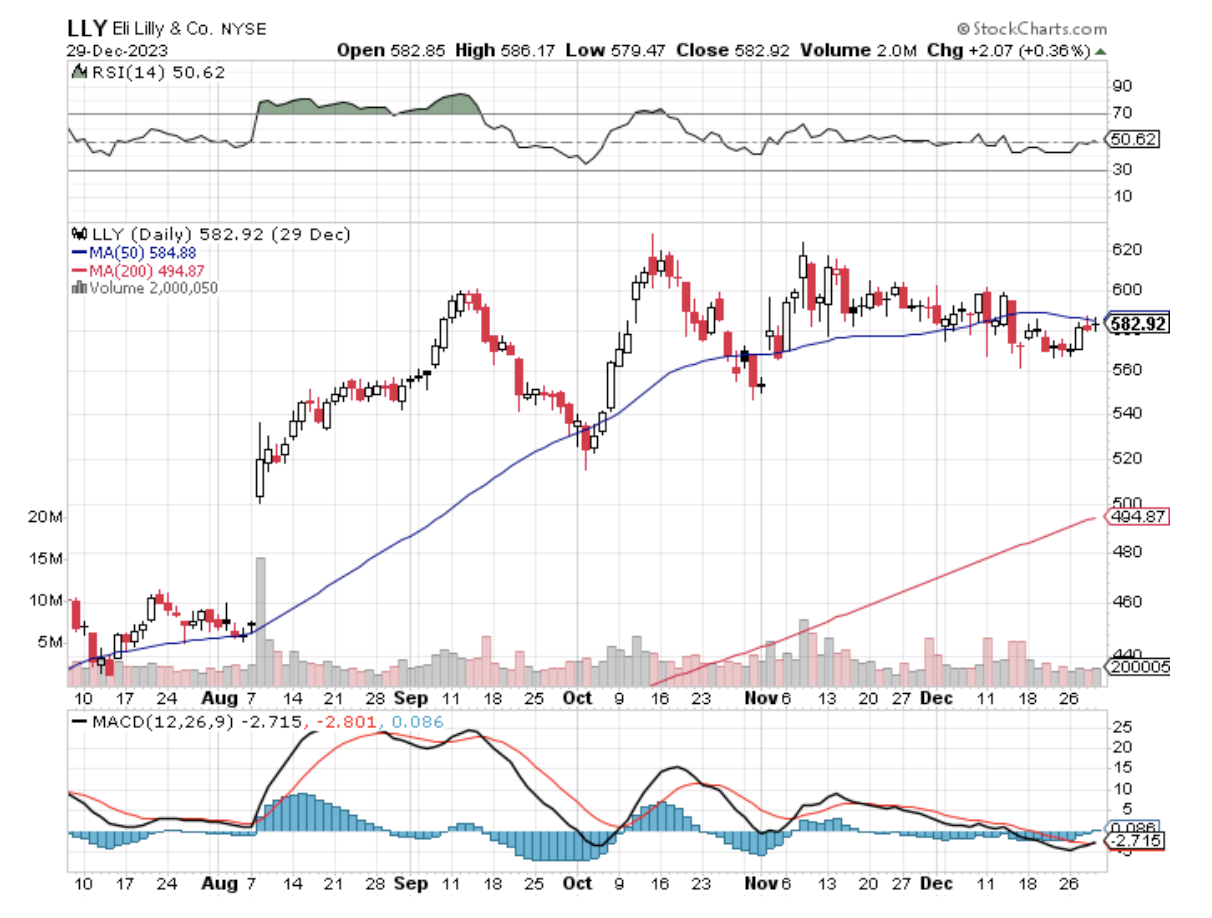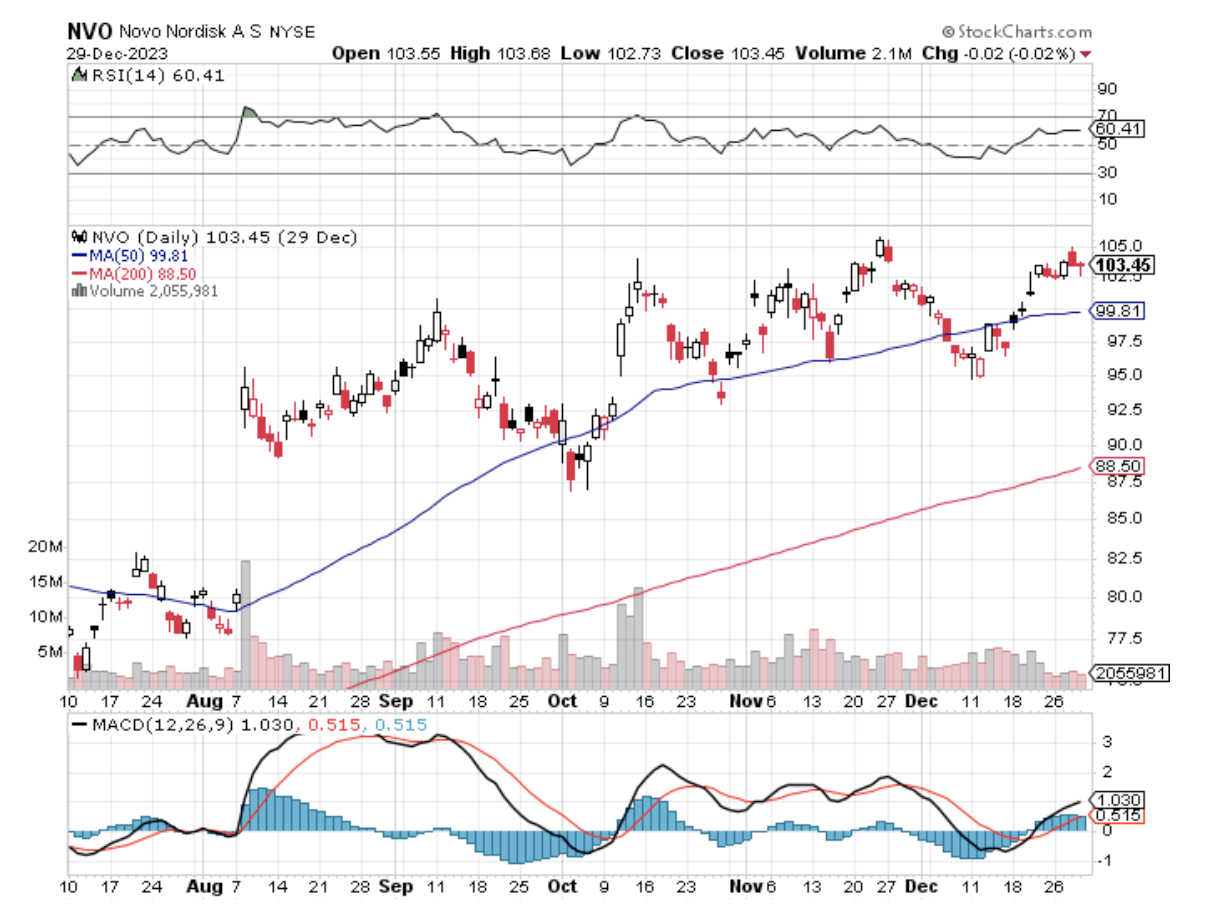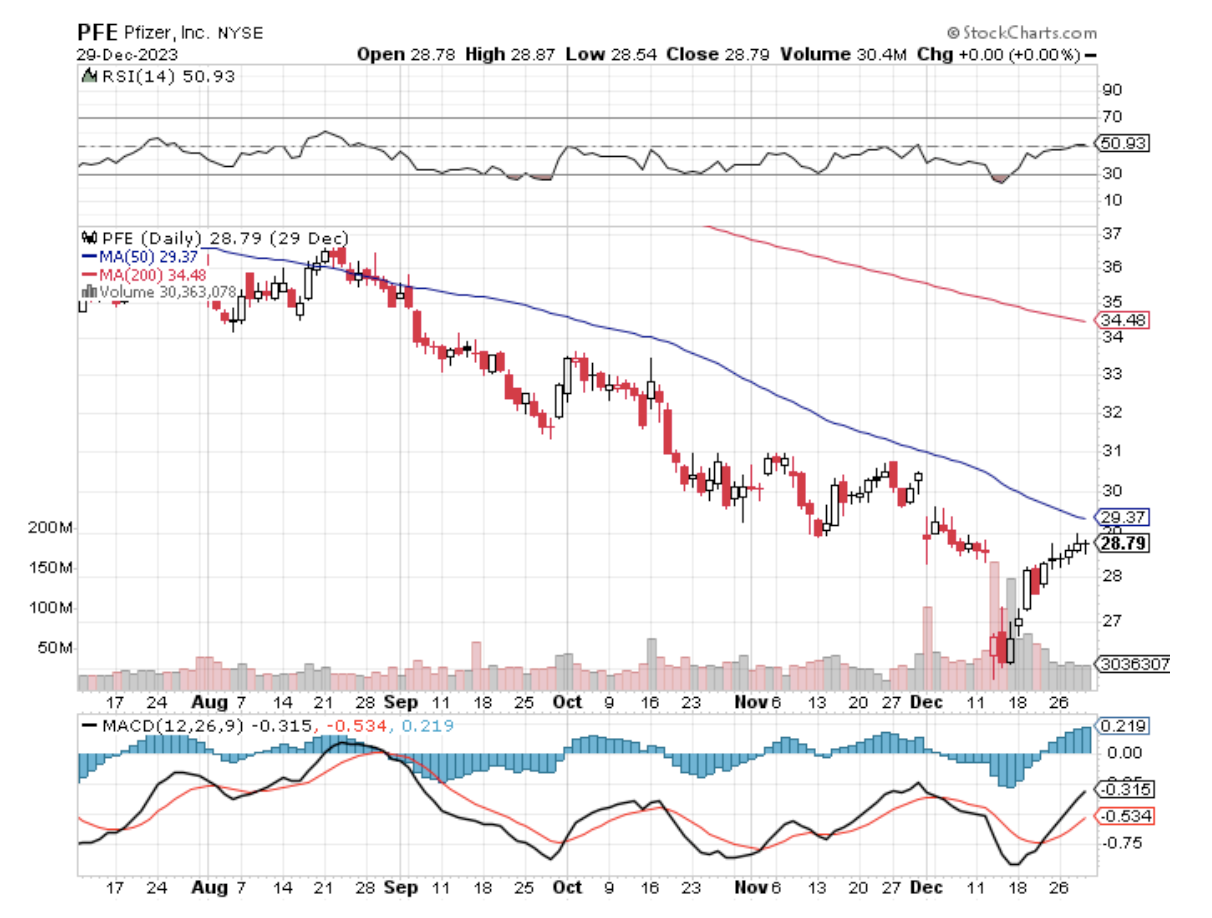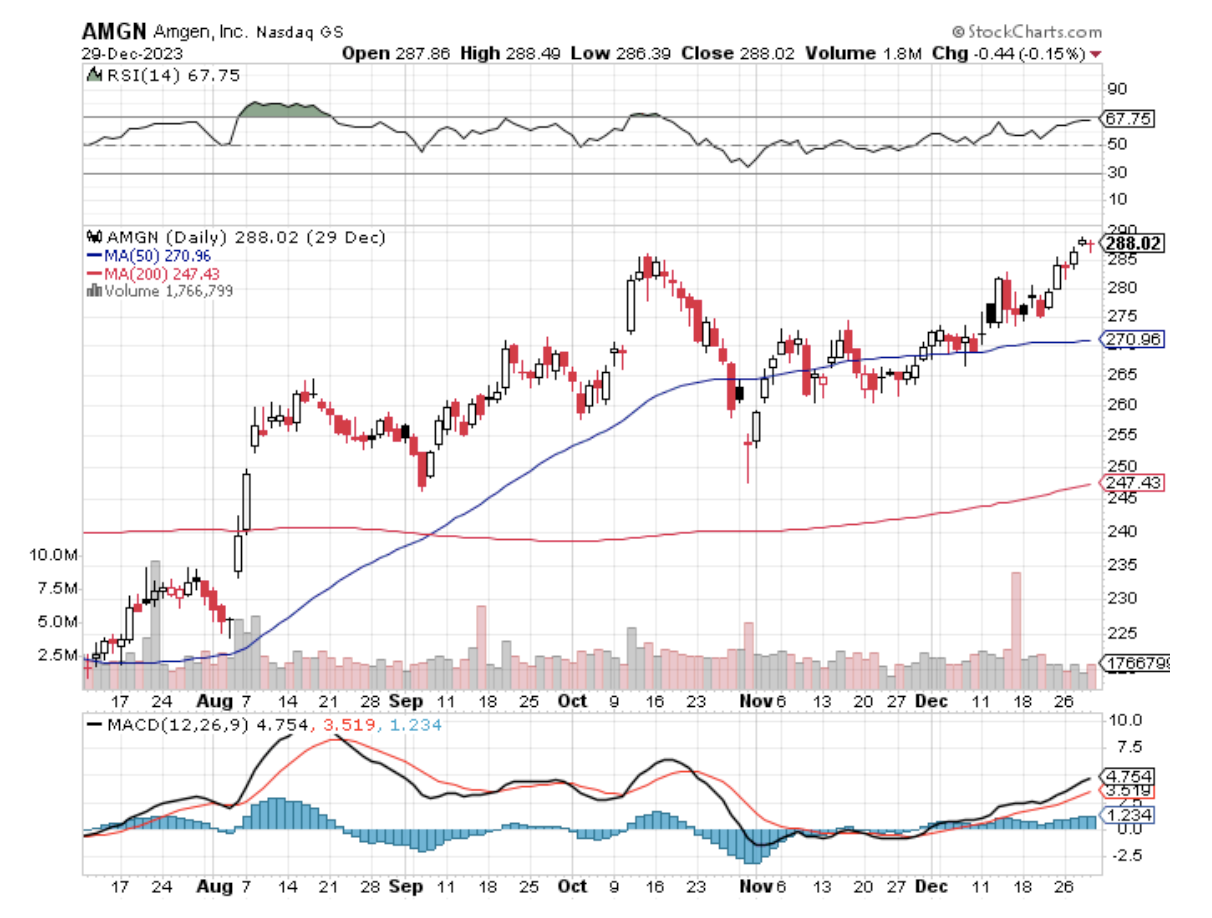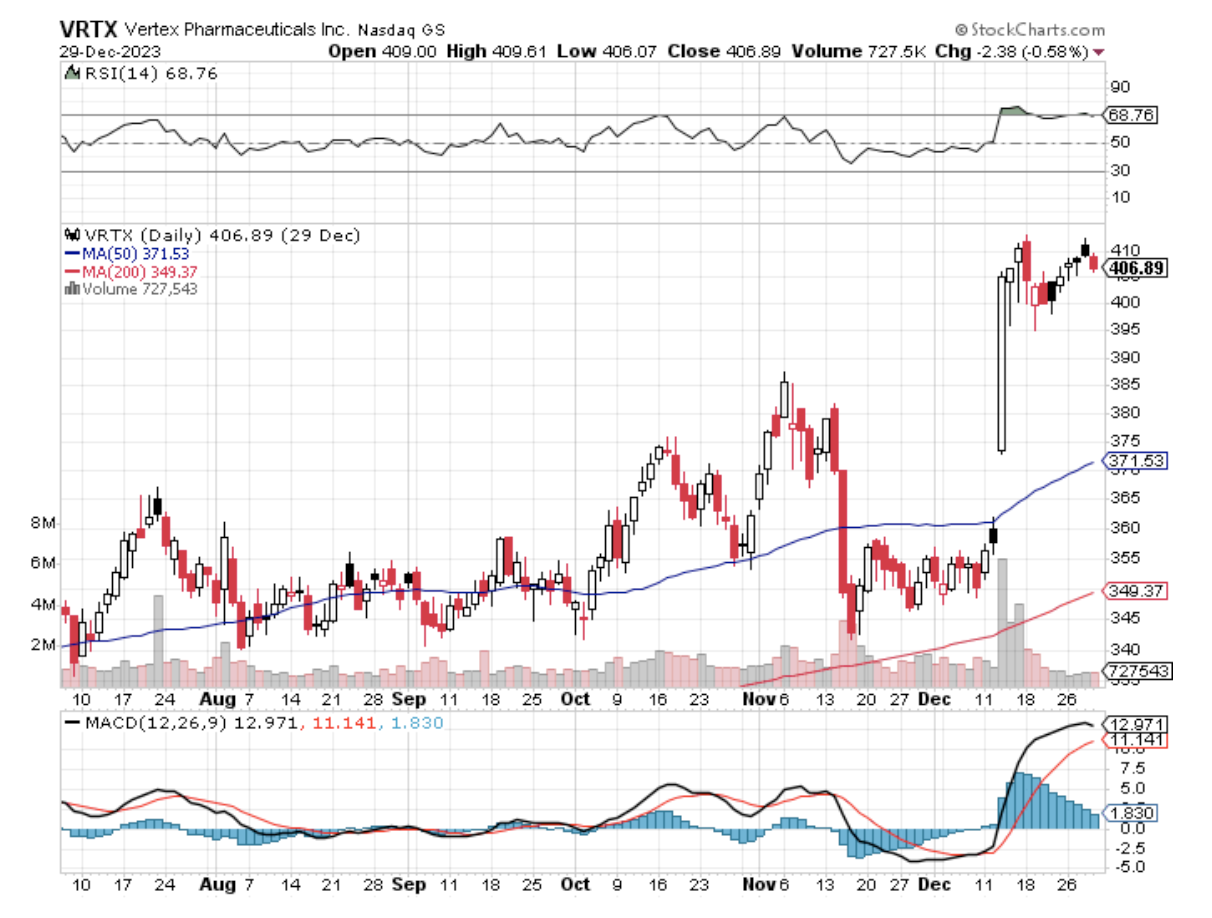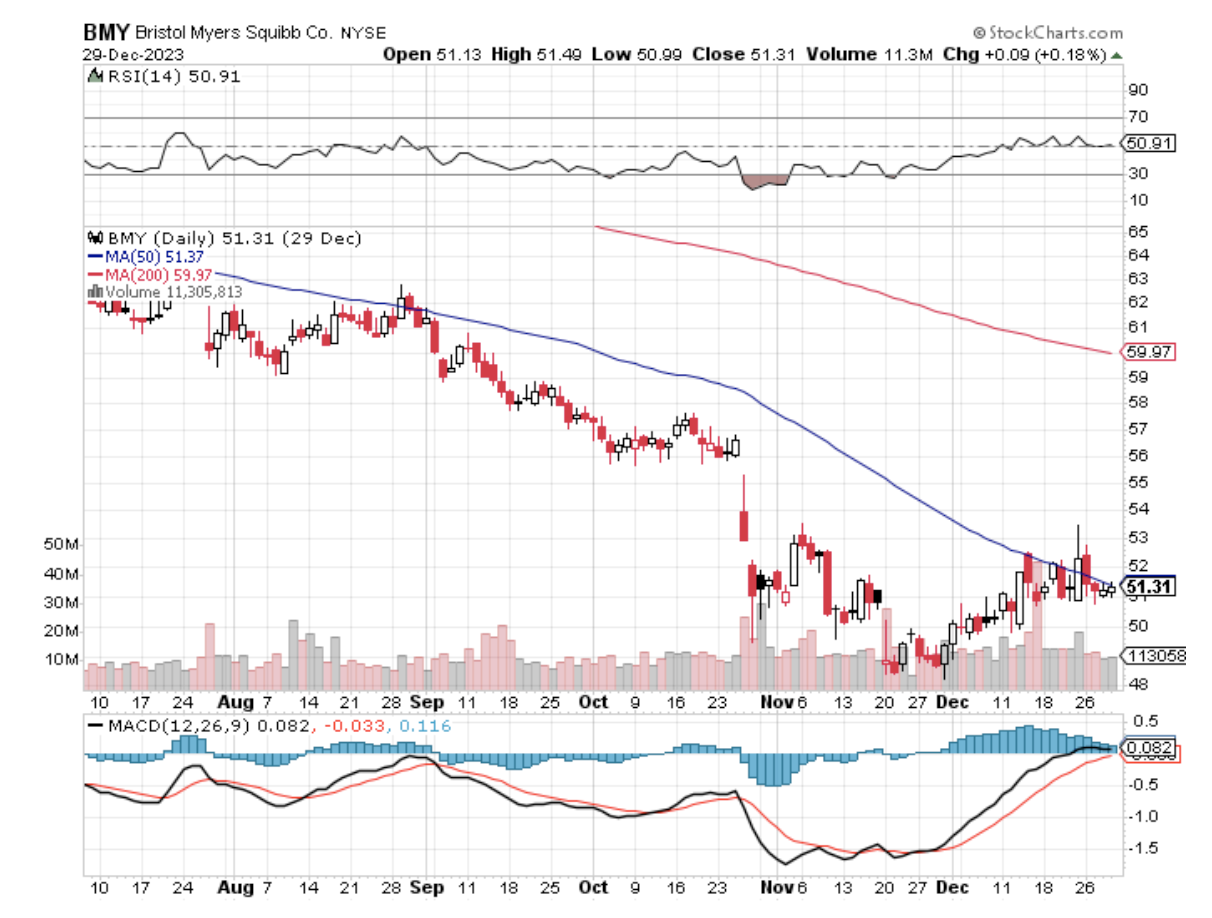The year 2023 in the biotechnology and healthcare world has been a rollercoaster with more dips than peaks.
While Eli Lilly (LLY) and Novo Nordisk (NVO) are hitting the jackpot with their new weight loss drugs, the rest of the healthcare sector is limping behind.
By year's end, the S&P 500 Health Care index had slipped by 0.4% since the start of the year, starkly contrasting the broader S&P 500's robust 24% growth.
That’s not just a minor setback; it's the sector's most significant underperformance in 30 years.
Fast forward to 2024. Conventional wisdom suggests healthcare stocks might lag in an election year. Why? Presidential candidates love to shake things up with healthcare reform promises, usually sending investors into a sell-off frenzy.
But this time around, the air is tinged with an unexpected optimism. After a year of hefty sell-offs, healthcare valuations have become irresistibly low, presenting a fertile ground for investment opportunities.
Plus, there's less regulatory uncertainty now, with major acquisitions like Amgen's (AMGN) of Horizon Therapeutics and Pfizer's (PFE) of Seagen sailing through without a hitch. And let's not forget the anticipated interest rate cuts could be a game-changer for the sector.
Interestingly, the typical election-year healthcare jitters might be less intense in 2024. After all, the likely presidential candidates are familiar faces, and the healthcare changes they've made (or not made) are well known.
Trump’s healthcare impact was minimal, and Biden has already pushed through significant drug pricing reform with the Medicare drug price negotiation program. This program, despite legal hurdles, is moving forward and has been priced into the market's expectations.
In a surprising turn of events, the Biden administration's recent move to potentially invalidate patents of some high-priced drugs didn't send investors running for the hills like it might have in previous years. It seems the fear of drug price regulation may be losing its sting.
Now, let's take a closer look at some of the healthcare sectors that are drawing attention.
Biotech has been in a slump since 2020, but things are starting to look up. The sector's last three-year downturn was in 1992, followed by a significant rebound.
Despite challenges like high capital-raising costs and a deluge of IPOs, biotech is showing signs of life. As these pandemic-era companies mature and produce valuable data, they offer both buying and selling opportunities.
M&A activity in biotech is also on the rise, and if interest rates fall, the sector's prospects look even brighter.
Keep an eye on Vertex Pharmaceuticals (VRTX), which is set to reveal more data on its experimental pain drug, and Amgen, which is awaiting data on its new obesity pill. CRISPR Therapeutics (CRSP) and Intellia Therapeutics (NTLA) should be on your watchlist, too.
Over in MedTech, the hype around GLP-1 weight loss drugs led to a sector-wide selloff.
The iShares Medical Devices ETF took a hit, dropping 13.9% by the end of October, but it started to recover in the last two months of the year. The GLP-1 concerns might continue to cast a shadow, but there's a growing sense that their impact might be more long-term, especially if interest rates fall.
In the pharma world, 2023 was a tale of two halves: Eli Lilly and Novo Nordisk on one side, with their successful weight-loss drugs and the rest trailing behind.
While the S&P 500 Pharmaceuticals index slightly declined, Lilly and Novo surged ahead with 56% and over 45% gains, respectively.
But 2024 might bring new challenges, especially for Lilly, as it rolls out Zepbound, its highly anticipated weight-loss drug.
For Novo, the focus will be on how Ozempic fares under Medicare's new drug pricing negotiations set to take effect in 2027.
The key to success in pharma now is finding companies with innovative drugs that promise revenue acceleration without the looming threat of patent cliffs. Pfizer and Bristol Myers Squibb (BMY), for instance, are under the microscope as they navigate impending patent expirations and strive to reassure investors.
In 2023, the healthcare market was a stock picker's paradise, especially given its complexity. The year ahead promises more of the same. Investors should be on the lookout for opportunities among stocks that underperformed last year but have solid fundamentals.
Despite the unpredictability of election years and the bumpy ride of 2023, the healthcare sector, buoyed by low valuations and potential rate cuts, is gearing up for what could be a significant turnaround this 2024. For savvy investors, this could be an opportunity not to be missed.

